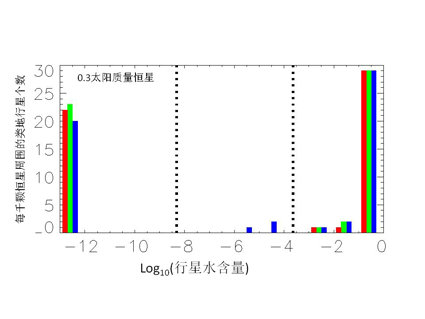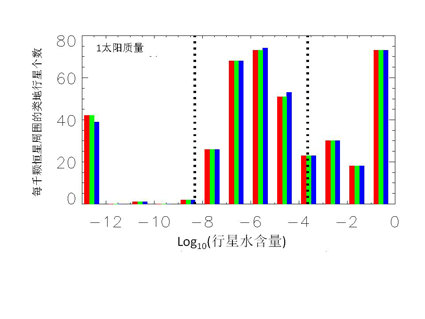(February 16th, 2015) Simulations by researchers at the Center for Earth System Science (CESS) at Tsinghua University and Tokyo Institute of Technology indicate that Earth-like planets are more likely to be found orbiting Sun-like stars than lower-mass stars currently targeted, in terms of water contents of planets.
The search for habitable planets currently focuses on so-called M dwarfs - stars with less than half the mass of the Sun. These stars are thought to have more habitable orbiting planets that are easier to find compared with G dwarfs - stars that have a similar mass to the Sun. However, according to recent simulations by a collaborative research team composed of Feng Tian at CESS Tsinghua University and Shigeru Ida at Tokyo Tech, M dwarf systems may not be the best places to look. The paper, titled " Water contents of Earth-mass planets around M dwarfs " is published on Nature Geoscience on February 16th, 2015.
For planets to be habitable, they must orbit the star within the ‘habitable zone’ where it is not too hot or too cold for liquid water to exist on a rocky planet's surface. In addition, recent studies on habitability of planets suggest that the water-land ratio must be similar to the Earth, in other words, the water mass fraction should not be far from the Earth’s one (~0.01wt%). Planets with too much water (> 1 wt%) – ocean planets - have oceans with average depth ~100 km and no continent. This type of planet tend to have an unstable climate and much more limited nutrient supply. On the other hand, water-poor planets like Venus, dune planets, become too arid for life.


Whereas G dwarfs – stars with the mass of our Sun – keep almost constant luminosity during the ‘pre-main sequence’ of their evolution, the luminosity of M dwarfs decrease by more than 10 times during the first 100 million years of their lives. This means that planets with the right amount of water at the right distance from M dwarfs may become too arid from over-exposure during the higher-luminosity early pre-main sequence period, while ocean planets retain their large amount of water. However this effect has been largely ignored by scientists.
Tian and Ida simulated planet distributions around stars with 0.3, 0.5 and 1.0 times the mass of the Sun. They then applied a model for water loss and accounted for the change in luminosity. They found that Earth-mass planets with Earth-like water contents occur 10–100 times less frequently around M dwarfs than around G dwarfs. They conclude “We suggest that stars close to the size of the Sun should be the primary targets for detecting Earth-like planets.”
Reference
Feng Tian and Shigeru Ida, “Water contents of Earth-mass planets around Mdwarfs”, Nature Geoscience 8, 177-180.https://dx.doi.org/10.1038/ngeo2372; published online 16 February 2015